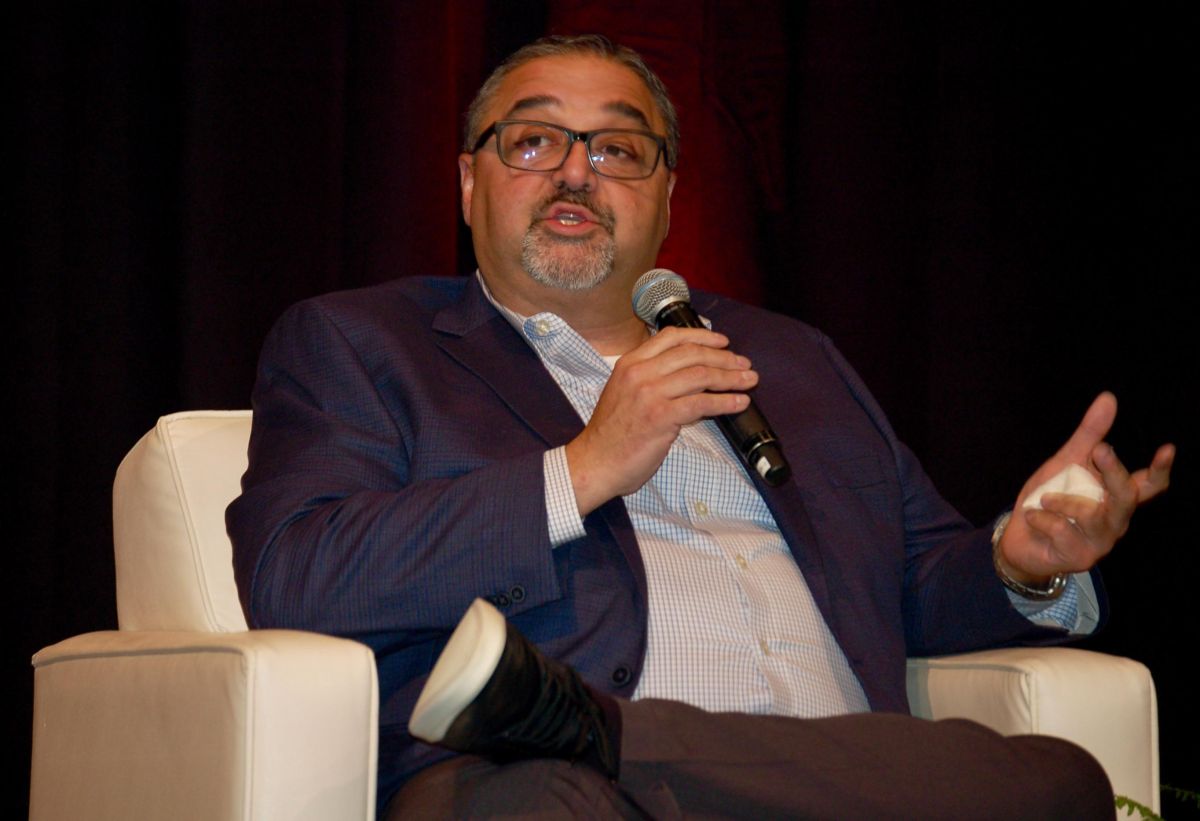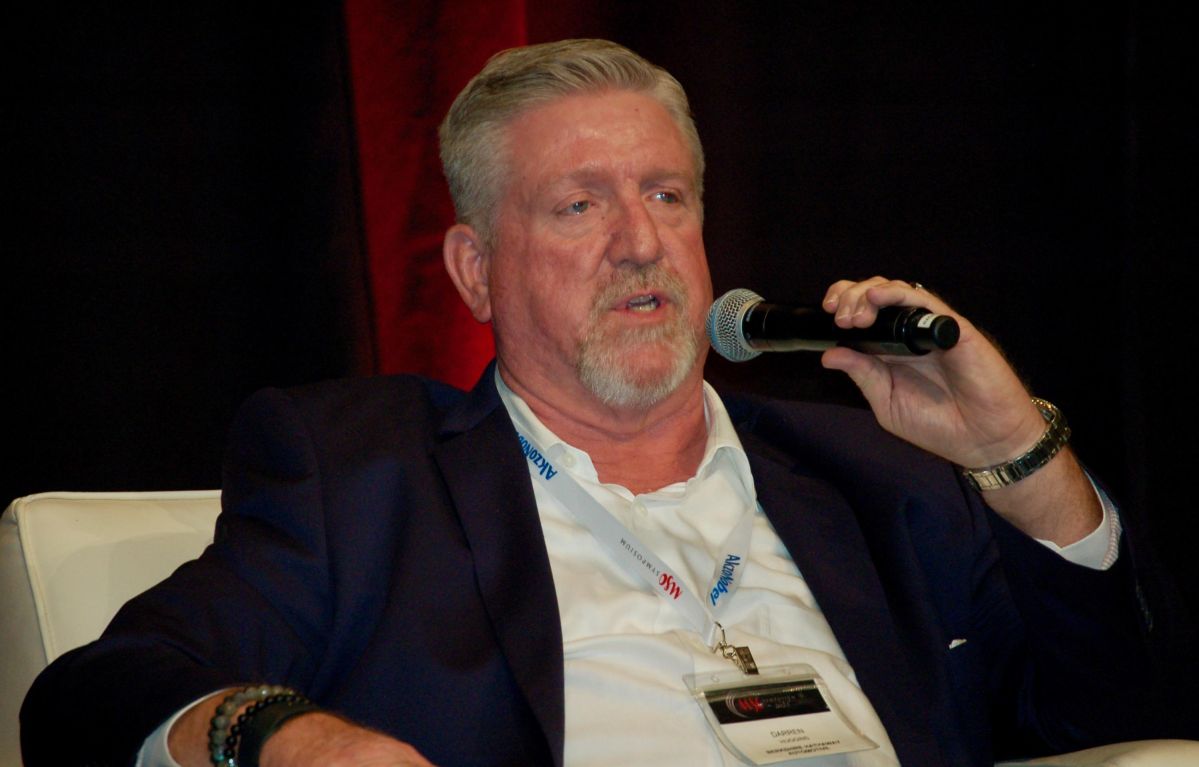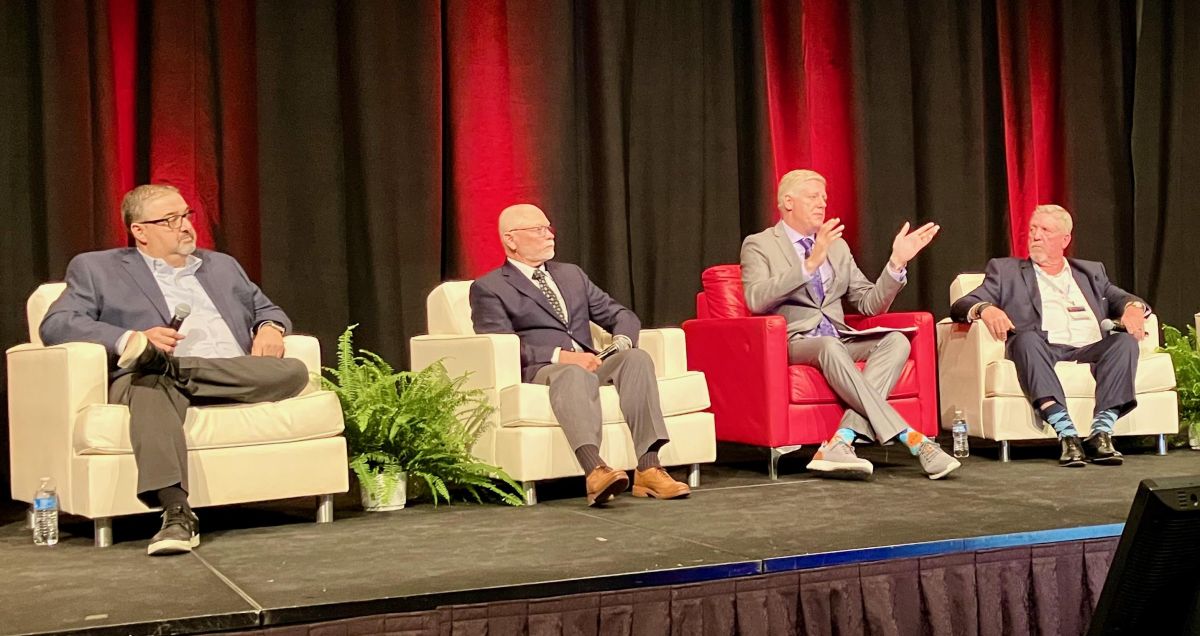As collision repair businesses of all sizes navigate how to best handle the growing amount of scanning and calibration work required on a daily basis, there’s indications there is no one best solution for all.
Among five multiple shop operators (MSOs) represented during a recent panel discussion of the topic, for example, each is handling calibration work in different ways, or combination of ways: mobile providers, their own stand-alone calibration centers, in-house at a subset of their locations, etc.
Moderating the panel at the MSO Symposium held in conjunction with the SEMA Show, Dan Risley of CCC Intelligent Solutions asked the panelists to discuss why they’ve chosen the model they have.

Crash Champions, which operates more than 600 shops in three dozen states, started a separate company, Automotive Technology Experts (ATE), doing mobile calibrations onsite for its shops that have the necessary site conditions, like a level floor, as well as doing some calibration work remotely.
“We wanted to keep as much [business] as we can in-house,” said John Panagopoulos of ATE. “But it’s also customer satisfaction and cycle time. It’s quicker.”
ATE was founded as a separate business because it’s a different type of business, he said.
“A lot of times, folks who are running collision repair centers want to try to operate a [calibration] business kind of similar to collision repair, but it’s completely different, especially when you go mobile,” Panagopoulos said. “The technicians aren’t the same. The technology is different. Pricing systems. Everything we do is just a completely different business model.”
Not Using Dealership Service Departments
New-car dealer Berkshire Hathaway Automotive operates 32 collision centers around the country. Darren Huggins, national collision director, was asked if those shops sublet their ADAS calibration work to the dealerships’ service departments.
“Absolutely not,” Huggins said. “In a dealer model, we’re all about trying to keep our work in-house, right? Even though we are a dealer, service operates in a different world than we do. And if you ever have to, as a dealer, send it to the service department, they have a tendency to take too long to do it. Even a basic alignment. Our mechanics in our own [collision] shops and our own collision centers are so busy, we don’t even really use our own mechanics for scanning and calibration. We have 19 of our 32 centers that have their own Tru-Point [ADAS calibration system] at this point and do all their own calibrations.”
How have they found staff for that work?
“We’ve had really good luck finding gamers that are in their parents’ basement that want to live there forever,” Huggins joked. “And they might Uber to work, but they’ll come because they’re really interested in technology. So we’ve had really good luck finding these type of people and training them to be our calibration scanning technicians. We’re really pretty much staying to our core business, and we’ve kind of created our own department within our department, and it’s working really well for us.”
Does the company using a hub-and-spoke model for their collision shops without a Tru-Point?
“No, not really,” Huggins said. “We’re partnered with asTech, so they’ll have mobile services for us, or there are some situations where asTech actually has an in-shop technician that will take care of that.”
Smaller Chain Keeping Work In-House
Darrell Amberson of LaMettry’s Collision said that company has a mechanical department in four of its 10 locations in Minnesota, along with two stand-alone mechanical shops and a calibration center. The company sends employees into its locations without mechanical departments to do scanning and basic calibration work.

“All the more difficult, demanding calibrations go to our calibration center,” he said.
The company has invested heavily into calibration work because it’s too big a part of the overall repair not to.
“I remember a few years ago reading an article quoting a representative from one of the vehicle manufacturers who said, in the future, 60% of the cost of repairs will revolve around new technologies. And I’m not sure when ‘in the future’ is, or how you exactly measure that, but I found that terribly compelling. I was thinking to myself: How do you explain subletting 60% of your work in the future? To me, that didn’t seem like a promising way to approach collision repair long term.”
Having the company’s employees conduct most calibration work has helped production even more than expected, he said.
“One of the things we’ve learned is we can cycle cars quicker than we thought,” Amberson said. “We can do more [calibration work] than what we first thought. We can do most jobs certainly within a day, and many of them same day.”
He said lots of other collision repair businesses tour LaMettry’s calibration center and ask what piece of equipment they should buy.
“I’m thinking to myself: We’ve got five calibration stations representing four different brands,” Amberson said. “This is not for the faint of heart, especially if you’re going to service all the major brands. So keep in mind, while we talk about all these advantages [of doing your own calibration work], it’s not for everybody. Maybe you’re a smaller shop. Maybe you can address certain brands. Maybe you can handle certain equipment. But if you’re going to be really serious about it and address all situations and all brands, it’s a large, large task.”
Second photo: John Panagopoulos said Crash Champions started a separate company, Automotive Technology Experts, to do mobile calibrations onsite for its shops.
Third photo: Darren Huggins of Berkshire Hathaway Automotive said the company has specialty departments within its 32 collision centers to handle calibration work.


















John Yoswick